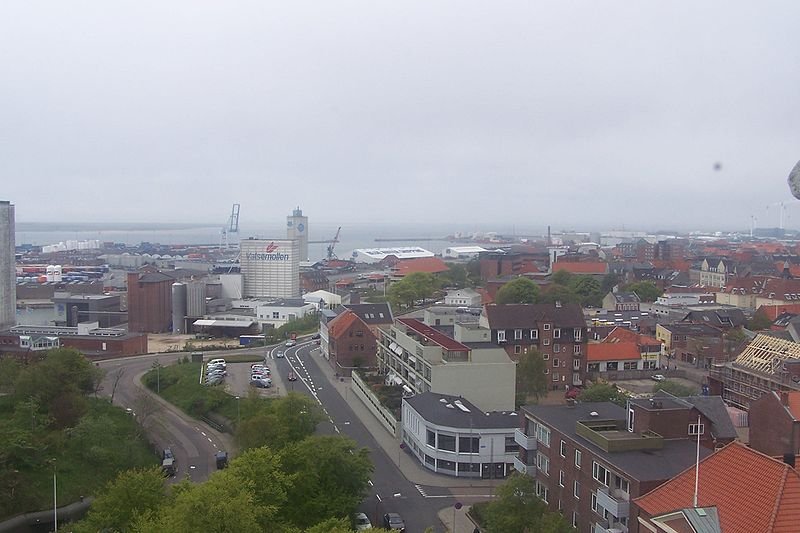 Esbjerg, Denmark
Esbjerg, DenmarkSource: https://commons.wikimedia.org/wiki/File:Esbjerg_HarbourfromWatertower.jpg
Author: Cnyborg

Esbjerg is Denmark's main seaport on the North Sea. Located on the west coast of Jutland, Esbjerg is today the largest commercial port in Denmark and the main center for Denmark's North Sea petroleum operations.
Esbjerg existed as a sleepy fishing village for many centuries until 1864, when Denmark was defeated by Prussia in the Second Schlewsig War, which saw Prussia taking away the regions of Schleswig and Holstein. Badly needing a port on the North Sea coast, the Danes chose Esbjerg. This helped it develop overnight from a fishing village to a major harbor.
The city of Esbjerg has a number of historic landmarks in its old town. Some of these date to the 19th century. One of the most surprising landmarks of Esbjerg are the four sculptures called Mennesket ved Havet (Men by the sea), by sculptor Svend Wiig Hansen. Like a Danish response to Abu Simbel Temple, it features four colossal statues of seated men facing the sea at Sædding Beach.
 Esbjerg market square
Esbjerg market squareSource: https://commons.wikimedia.org/wiki/File:Esbjerg_-_Marktplatz2.jpg
Author: Taxiarchos228

Visiting Esbjerg
Take the E20 expressway to reach Esbjerg from other parts of Denmark. The city has an airport that receives flights from London Stansted, Bergen, and Aberdeen.Sights & Attractions in Esbjerg
- Esbjerg Museum
Museum showcasing the history of the town. It also has a large collection of amber on display. - Fiskeri-og Søfartsmuseet
The Museum of Fisheries and Maritime provides an insight into the maritime activities, with displays of navigation instruments. It also includes a large aquarium with a collection of North Sea marine life. - Mennesket ved Havet
The four statues of "Men by the Sea" erected in 1995. - Vandtårnet
Water tower that supplied the town today is a local attraction and observation platform.
 Latest updates on Penang Travel Tips
Latest updates on Penang Travel Tips

Copyright © 2003-2025 Timothy Tye. All Rights Reserved.

 Go Back
Go Back